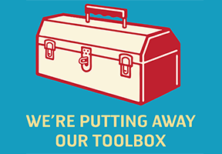Building your brand: the logo
Your logo is an important visual component of your brand whether you’re an organization or an individual. Since developing it can be fairly involved, this tip sheet describes how the process works.
Logos exist to identify your organization to your various audiences. They can comprise text only, images only or a combination of the two. The look and feel of the text and / or images logo needs to reflect your organization and how it wants to be perceived.
Logos have many applications. They can appear on anything from a business card to a billboard. They need to be designed so they are legible at small and large sizes. Colours may be applied to the design but, typically, logos should be easy to read in one colour so they can be photocopied, faxed and otherwise reproduced easily and inexpensively.
Developing an identity Developing an identity will be an engaging effort for both your organization and your designer. For a company, the brand identity may be a critical element in the success of a product. Developing the appropriate solution can involve preparing numerous variations before a final decision is made. For many organizations, developing an identity can feel very personal, because it’s a key part of their public image.
Who is involved Deciding who will be involved is an important, early step between organization and designer. Usually, the organization designates a lead person to liaise with the design group. That person speaks for a small group within the organization whose job is to provide direction. (It is almost always difficult to find consensus on design proposals within large groups.)
DISCOVERY This is where the work begins. Client and designer meet in person to discuss the overall parameters of the project and the nature of the desired final product. Areas to discuss include:
- what profile the organization wants to establish. For example: grassroots, corporate, conservative, adventurous, elegant, strong, modern.
- how the logo should differentiate the organization from similar organizations. It can be useful for the client to show examples of previous identities, and samples of identities to be avoided or emulated.
- whether the logo should be a wordmark only, image only or a combination, and whether the logo will be accompanied by text – such as a slogan, a full name, the year of establishment and so on.
- if the logo needs to include images, this phase of the discussion will determine whether those images should be illustrative or photographic.
- possible applications for the logo, such as letterheads, websites, mugs and pens.
CONCEPT DEVELOPMENT AND CLIENT REVIEW This stage sees the designer presenting several rough and general designs based on the initial briefing. If the project requires illustration or photography, the designer may present existing samples for style considerations and hints at a possible direction.
The designer may also present several general typographic styles for feedback. The client considers these general ideas and points the designer towards the desired approach or approaches. This phase may take place in person or materials may be sent electronically or via fax and courier where appropriate.
CONCEPT DEVELOPMENT, MOCK-UPS AND CLIENT REVIEW The designer prepares about three basic designs (oftentimes accompanied by one or more minor variations) based on the previous step. This phase may involve several rounds of discussion between client and designer as different proposals are combined, varied or give rise to new ideas. Presentations may take place in person or through mock-ups sent electronically.
REFINEMENT AND PRESENTATION One or two designs are chosen for final refinement. After reviewing these final designs, the client makes a decision. The final design is presented electronically.
FURTHER STAGES After a logo has been approved, the client may ask the designer to begin the process of applying it to various materials such as business cards, letterhead, websites, signage, forms and so on. Occasionally, some of these materials may be designed in concert with the logo design process, to provide context and help the client make a decision.
STYLE GUIDE Many organizations request a style guide which details how the logo is to be used at various sizes and applications, plus what colours and typestyles are to be used. The style guide acts to direct other designers who may be asked to apply the logo. The style guide also ensures that the organization’s identity is presented consistently across the wide variety of communications tools it may use.
“Building your brand: the logo” is one in an occasional series of discussion papers about communication and design from Working Design, a Vancouver, B.C.-based company. www.workingdesign.net
